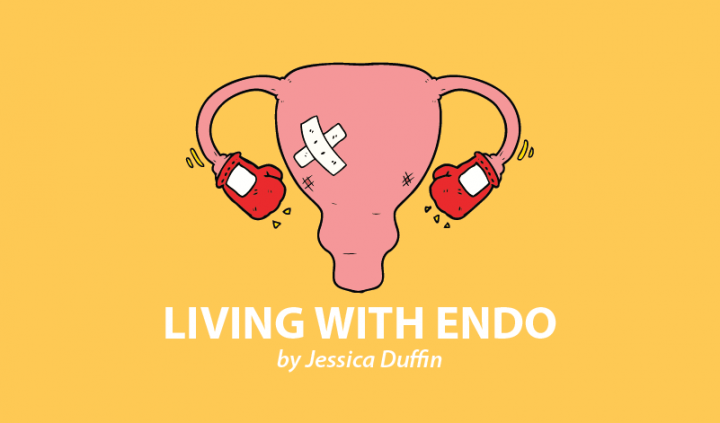One of the greatest dietary challenges is reducing sugar. Sugar is associated with fun times like sunny weekends at the beach enjoying ice cream, but also with some of the most serious chronic diseases that plague today’s society.
Sugar is a problem for those of us with endometriosis for a few reasons, including:
- Sugar causes the body to release more of an inflammatory chemical called prostaglandin 2 and actually blocks the anti-inflammatory ones! Inflammation, especially chronic inflammation, causes heightened pain, which is, of course, something we want to reduce.
- Its effect on blood sugar may worsen fatigue. Balanced blood sugar is absolutely vital to healthy and balanced hormones. As I’ve mentioned before, many of us with endometriosis are estrogen dominant, so we want to address this issue by balancing our blood sugar and other methods.
- Sugar negatively impacts the gut. People with endometriosis often struggle with gut issues, and reducing sugar in the diet can improve these symptoms.
It’s my constant practice to mindfully be aware of and reduce my intake of sugar. I’ve learned some tips along the way that have helped me beat my inner sugar addict.
Eat low-sugar fruit
It’s really easy to mentally separate sugar into “good” and “bad” sugars. While it’s true that some types of sugar are more damaging than others, eating a whole load of fruit to satisfy your sugar cravings won’t necessarily help to reduce the pain or balance your blood sugar. High-sugar fruits will still negatively affect your blood sugar, and can trigger pain or increase it over time as inflammation accumulates.
Low-sugar fruits such as berries are a great way to get the benefits of fiber and vitamins, hit that sweet spot, and help wean you off high sugar levels. I like to have berries with my breakfast. I also make sure I have protein, good fats, fiber, and complex carbs to keep my blood sugar levels stable.
If it’s a Friday night and you’re craving something sweet, try dipping berries in 100 percent dark chocolate. This won’t add any sugar but tastes indulgent.
Pair sweet fruit with fat
I don’t eliminate high-sugar fruits from my diet completely — they’re delicious and full of nutrients! — I’m just mindful of when and how I consume them. I can’t eat high-sugar fruits when I’m in my premenstrual or menstrual phases, because it may increase my pain levels. But during ovulation, when I feel strong and pain-free, I can treat myself.
I tend to enjoy these fruits as a weekend treat to avoid creating a habit of eating too much sugar during the week. When I do eat them, I do my best to reduce the impact they will have on my blood sugar by adding good fats and protein. My favorite example is medjool dates stuffed with nut butter!
Go to the dark side
Generally, when it comes to chocolate, the higher the cocoa content, the lower the sugar. When I first started the endometriosis diet, I was a total sugar addict and loved milk chocolate. As I transitioned, I fell in love with raw chocolate, and slowly my taste buds became able to tolerate stronger and stronger chocolate. Now, I can eat and love 100 percent dark chocolate!
Chocolate varies in quality, and some 100 percent bars are just too bitter for me, but others are rich and surprisingly smooth tasting, so shop around.
Don’t worry if you can’t go straight (or ever) to 100 percent. Try dipping your toes in with a 60 percent bar and keep moving toward the higher end. There are quite a few 95 percent bars with just a pinch of sugar to balance that bitterness, so that could be a great way to get your fix.
Try natural alternatives
I won’t pretend that I fully understand the world of sugar-free sweeteners. I hear experts say to not eat sweeteners at all, and others say that natural ones are fine. In their book, “The Endometriosis Health & Diet Program,” Dr. Andrew S. Cook and Danielle Cook list stevia and xylitol as “allowed” sweeteners in their endometriosis diet. These two natural sweeteners also make an appearance in many other health food products.
The authors caution that xylitol can cause stomach upset like bloating and cramps, so if you already struggle with these (as many of us with endo do), you may want to stick with stevia.
Coconut sugar, maple syrup, molasses, and some other natural sugars take a little longer to hit the bloodstream, so they are better options for balancing blood sugar. They are still higher in sugar, so you may want to be mindful of how much you consume.
What are your thoughts about diet and sugar? Please share in the comments below.
***
Note: Endometriosis News is strictly a news and information website about the disease. It does not provide medical advice, diagnosis, or treatment. This content is not intended to be a substitute for professional medical advice, diagnosis, or treatment. Always seek the advice of your physician or other qualified health provider with any questions you may have regarding a medical condition. Never disregard professional medical advice or delay in seeking it because of something you have read on this website. The opinions expressed in this column are not those of Endometriosis News or its parent company, BioNews Services, and are intended to spark discussion about issues pertaining to endometriosis.

